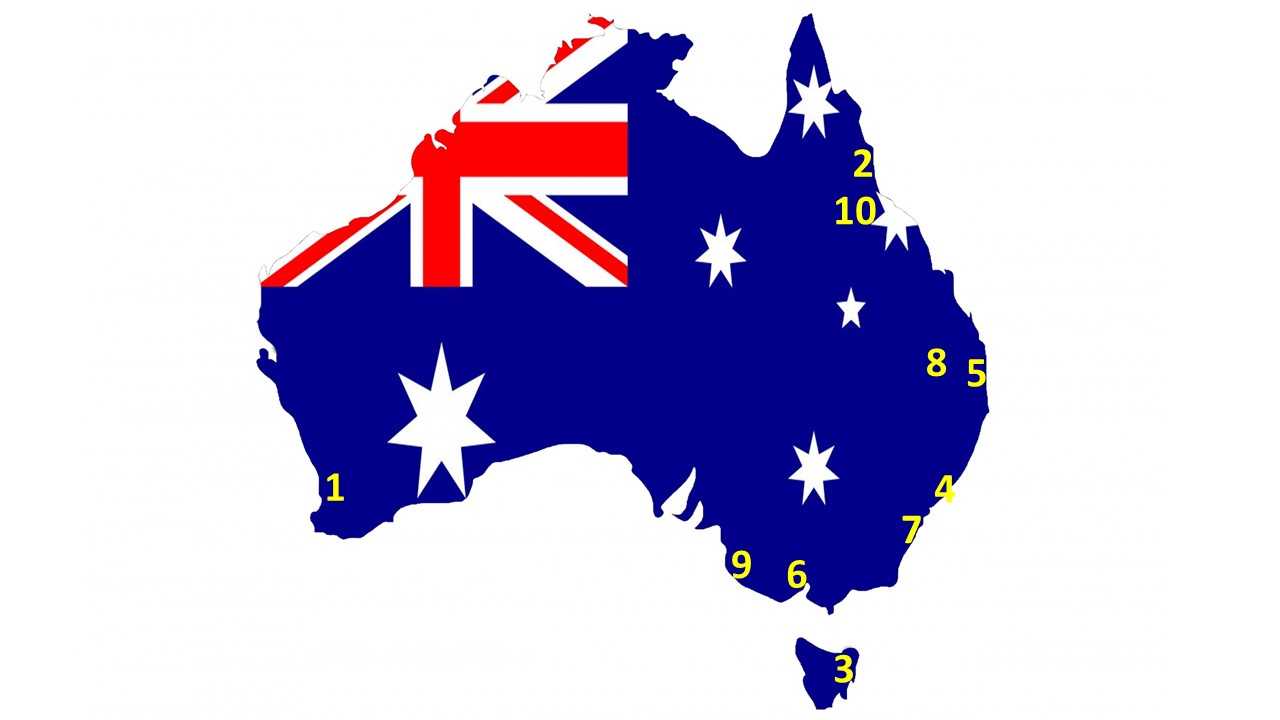
Major Australian Cities that are not Capitals Quiz
In a huge country, over 65% of Australians are crammed into the five mainland state capitals. However there are many beautiful cities that are not quite as big as their respective big brothers. This quiz looks at ten major Australian non-capital cities.
A label quiz
by 1nn1.
Estimated time: 3 mins.
